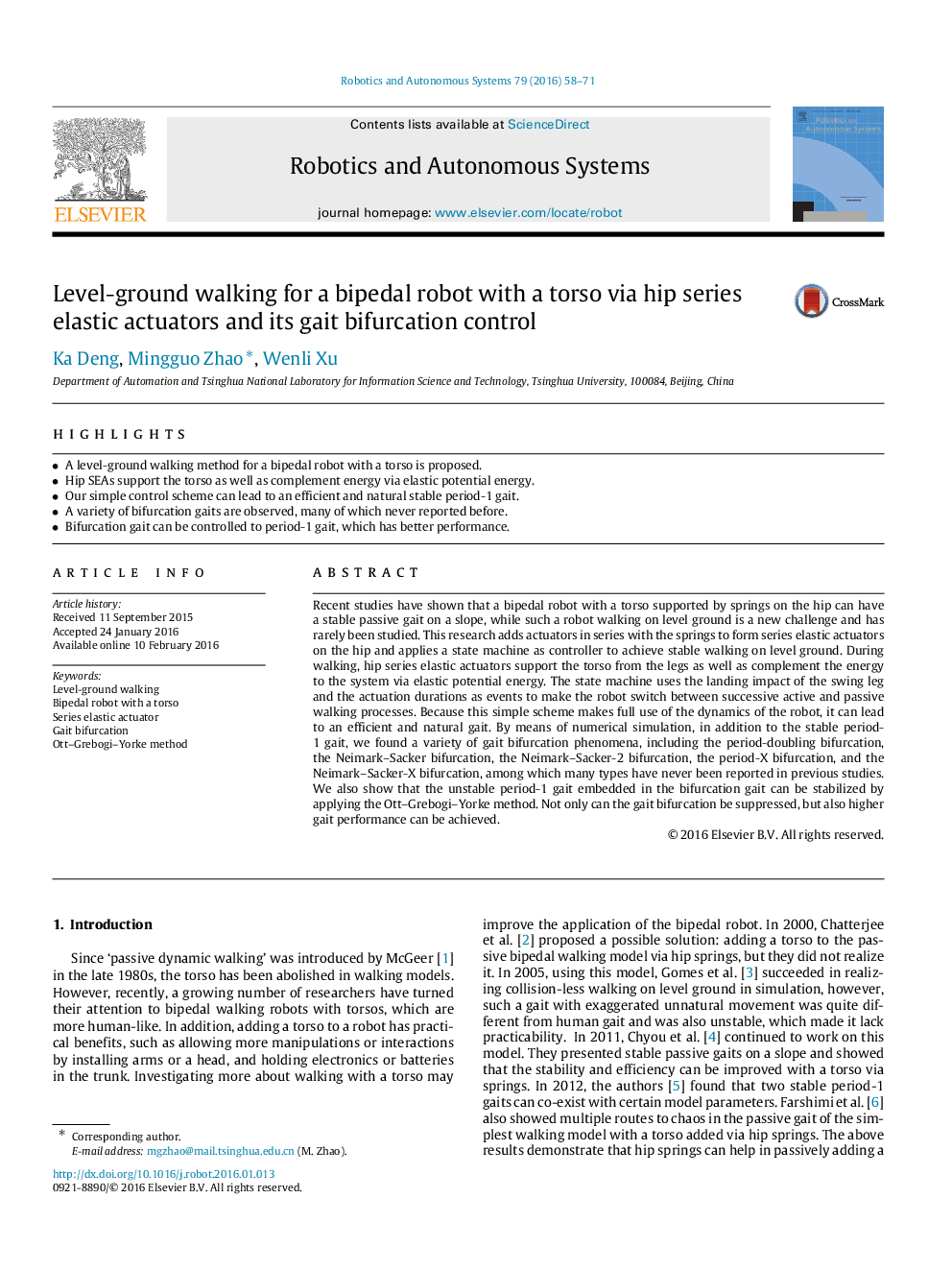| Article ID | Journal | Published Year | Pages | File Type |
|---|---|---|---|---|
| 411253 | Robotics and Autonomous Systems | 2016 | 14 Pages |
•A level-ground walking method for a bipedal robot with a torso is proposed.•Hip SEAs support the torso as well as complement energy via elastic potential energy.•Our simple control scheme can lead to an efficient and natural stable period-1 gait.•A variety of bifurcation gaits are observed, many of which never reported before.•Bifurcation gait can be controlled to period-1 gait, which has better performance.
Recent studies have shown that a bipedal robot with a torso supported by springs on the hip can have a stable passive gait on a slope, while such a robot walking on level ground is a new challenge and has rarely been studied. This research adds actuators in series with the springs to form series elastic actuators on the hip and applies a state machine as controller to achieve stable walking on level ground. During walking, hip series elastic actuators support the torso from the legs as well as complement the energy to the system via elastic potential energy. The state machine uses the landing impact of the swing leg and the actuation durations as events to make the robot switch between successive active and passive walking processes. Because this simple scheme makes full use of the dynamics of the robot, it can lead to an efficient and natural gait. By means of numerical simulation, in addition to the stable period-1 gait, we found a variety of gait bifurcation phenomena, including the period-doubling bifurcation, the Neimark–Sacker bifurcation, the Neimark–Sacker-2 bifurcation, the period-X bifurcation, and the Neimark–Sacker-X bifurcation, among which many types have never been reported in previous studies. We also show that the unstable period-1 gait embedded in the bifurcation gait can be stabilized by applying the Ott–Grebogi–Yorke method. Not only can the gait bifurcation be suppressed, but also higher gait performance can be achieved.
